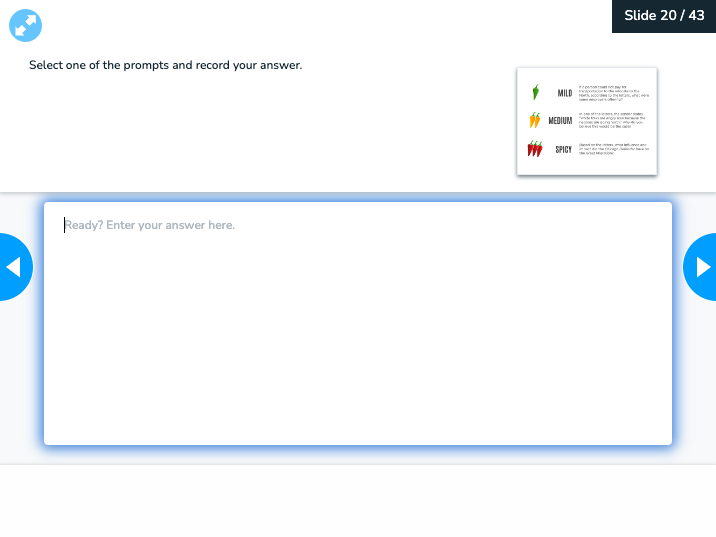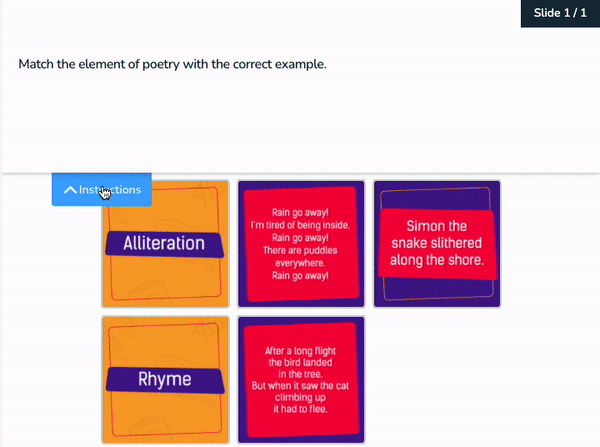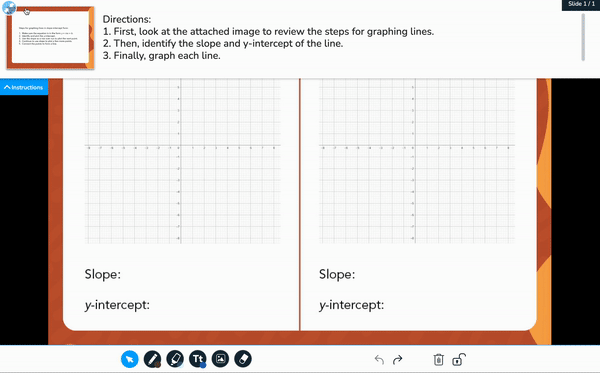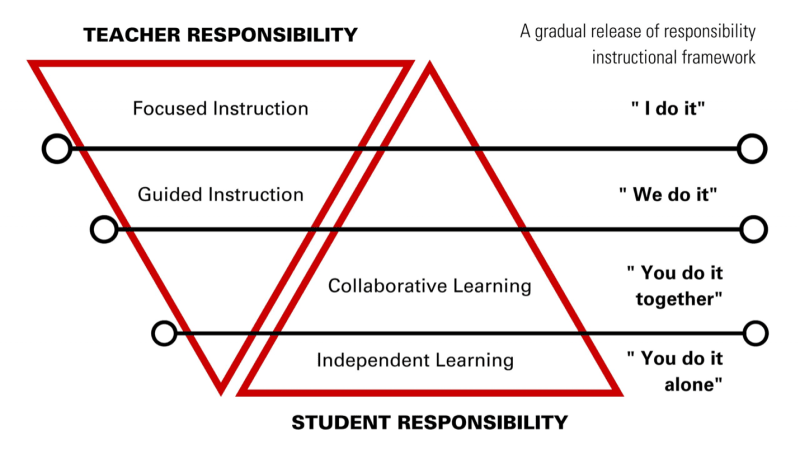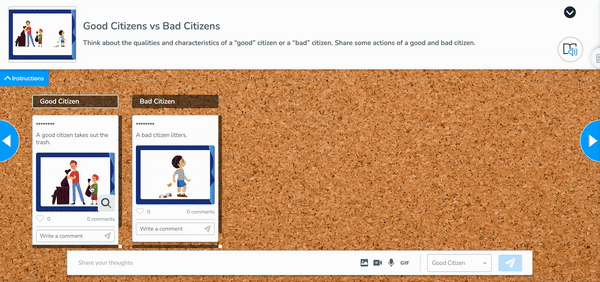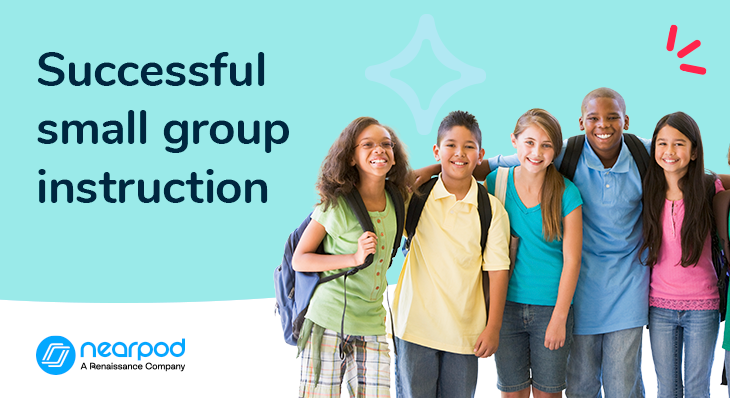
6 Tips for successful small group instruction
Every educator knows the difference that 1:1, personalized instruction can make for a child, but when class sizes prohibit such individualized time, many teachers turn to small group instruction. The benefits of small group instruction are especially important as class sizes grow with the increasing teacher shortage. Nowadays, you may walk into a classroom and see the majority of students working on one task while the teacher has pulled a smaller group to the side for more targeted, data-driven instruction.
What are the benefits of small group instruction?
Small group instruction supports classroom management, builds community, and, most importantly, supports individual students’ needs. With small groups in the classroom, teachers can better tailor their instruction to students’ learning goals and provide meaningful feedback in the moment. The targeted skill development provides students with more instances of practice in an environment that encourages higher levels of participation and engagement. As a result, students are more likely to stay focused, ask questions, and share their ideas.
What is small group teaching?
Small group instruction is a student-centered teaching method in which the teacher still provides the instruction but to a smaller cohort of students. The group size can range from two to many; most teachers appreciate the valuable interaction time and keep the group size to under five or six students. Often, while small group instruction is happening, the other students are engaging in similar small group work.
Small group teaching with Nearpod’s support
Nearpod embraces more innovative teaching strategies by turning what may be passive learning experiences into more active learning experiences. Nearpod’s platform can transform student engagement with content that is visually rich, activities that promote active learning, and data-rich reporting to better inform instruction. And the beauty of Nearpod’s design is the flexibility it offers and that educators require.
Teachers can assign the whole group one lesson, activity, or task via Nearpod Student-Paced mode, and then work directly with a smaller group of students using a Live Participation lesson targeting a particular skill or topic. In both instances, the teacher can leverage real-time data via the Teacher Dashboard to inform small group instruction and also monitor the rest of the class’s focus and progress.
Foster a love of learning in every student with Nearpod. Teachers can sign up for free below to access and create interactive lessons. Administrators can schedule a call with an expert to unlock the full power of Nearpod for schools and districts.
7 Tips for successful small group instruction
1. Target your instruction
It’s a given that students have varied and individual needs. Yet, teachers often lament that there is not enough time in the day to address each student as much as they’d like (required instructional time varies from state to state). Whether you teach elementary, middle, or high school, small groups can be particularly effective when grouped based on students’ individual needs and abilities. With small group instruction, you will have the opportunity to rotate around the classroom and differentiate instruction as needed. Small group instruction examples meet Tier II of the MTSS framework. You may want to move between clusters of desks or pull students to an area of the classroom where you can host mini-conferences to review work or further support skill development in a more targeted manner.
You can rely on Nearpod’s Teacher Dashboard during a Live Participation Lesson to provide real-time formative assessment data to help inform your next steps and differentiate instruction. In the Post-Session Reports, you can look for patterns across your classroom of students to help you design small groups to optimize instructional time. Also, for a data-informed approach to instruction during a lesson, use Nearpod’s real-time insights to keep a finger on the pulse of the classroom at all times. With Nearpod’s formative assessment activities, you can make data-informed decisions when it comes to individualizing and personalizing instruction. Even with Student-Paced lessons, educators can monitor students’ learning while they complete their assignments.
2. Add your secret sauce
You know your students best. You are with them day in and out and are constantly observing behaviors and evaluating student progress. With small group instruction, you can intervene in the moment or through planned activities in many different ways as suggested by RTI (Response to Intervention). But even within group work, you can tailor content to address different learning styles or accessibility needs. Consider the ways you can differentiate and enhance the content and the pedagogy to make sure you reach all kids.
Nearpod acknowledges the artists that teachers are. With a simple click, you can duplicate any Nearpod lesson planning and then make edits to adjust the content and flow to meet your entire class’s or a small group’s needs. You can add multimedia content to enrich the presentation of new material through videos, audio files, images, articles, or PDFs. You can turn on Immersive Reader to make the content more accessible, especially for small group reading instruction. You can merge, delete, or reorder slides with content and activities as necessary. Nearpod capitalizes on the best of technology to drive student achievement through high-quality instructional experiences.
3. Build student confidence
With the varied student learning styles you are bound to have in one classroom, small group instruction can help to build student confidence. Many students may be reticent to ask questions or ask for clarification during a whole-group lesson. Small group teaching can give students the extra boost of confidence and motivation to speak up and participate more readily. They can bolster their communication skills by expressing their thoughts and taking risks. For instance, when a student reads a complex text, the teacher can facilitate discussions in smaller groups to ensure that all students understand the material thoroughly.
Nearpod’s suite of nine interactive activities speaks to students’ diverse learning styles, encouraging them to express their ideas in a variety of ways. Within a small group, you may want to leverage the activities depending on learning objectives or learning styles. One student might grasp onto the visual cues of Matching Pairs, while another may enjoy the creative expression of Draw It.
4. Gradually release responsibility
Many of you may already rely on the Gradual Release of Responsibility model, often referred to as “I do, we do, you do.” In this model, the teacher begins with direction instruction and modeling, before shifting to a small group setting and then to independent practice. Whether you are working with 30 students or three, you can still apply this same strategy to provide students with optimal support and allow them to take ownership of (and risks in) their own learning journeys.
Within Nearpod, you may want to start small group activities in Live Participation mode. You can tee up the lesson, set clear expectations, and begin some guided exploration. Yet, small group instruction time can be all too brief—in which case you can switch from Live Participation to Student Paced mode to enable the students to complete the rest of the lesson on their own. You won’t have to launch another code or have them start over. Instead, you can optimize the instructional time by streamlining instruction with Nearpod.
5. Promote peer-to-peer learning
While you are working with small groups in the classroom, you can promote peer-to-peer learning with the rest of the class. Peer-to-peer learning is a collaborative learning activity where students teach and learn from one another—they support and challenge one another to hone critical thinking skills. Peer-to-peer learning promotes effective communication skills, from providing constructive feedback to asking thoughtful questions to resolving conflicts. One of the strongest undercurrents of a successful classroom is a strong sense of community. This classroom culture can make or break a student’s experience. By creating a safe and comfortable learning environment, peer-to-peer learning promotes the sharing of opinions, the diversity of ideas, and respect for one another.
Within Nearpod, the Collaborate Board celebrates such an exchange of ideas. Students’ thoughts can be visualized, shared, heard, and further developed. With the Collaborate Board, students have more methods and means to share their thinking and participate in the conversation without feeling like they’re in the spotlight. They learn how to respectfully disagree or even how to change opinions based on someone else’s contributions. One popular design thinking method is for kids to build off of one another’s ideas by stating, “Yes, and …” first. “Yes, and …” is a way to brainstorm, positively acknowledge, support, and collaborate; no one’s contributions are shot down!
6. Build positive teacher-student relationships
Part of a teacher’s skill set is building and nurturing relationships with students. One of the great benefits of small group instruction is that you can get to know your students even better by diving into their individual passions and interests. You can peel back the layers of their personality and find authentic connections to develop greater trust and understanding. Such positive relationships result in an increased desire to learn, which can lead to overall academic improvement. Plus, students will feel a deeper sense of belonging and community with such teacher-student bonding.
Nearpod offers more than 22,000 quality lessons, so you can easily find content and activities that not only meet your classroom learning goals but also speak to individual students’ interests. Lean on the standards-aligned library of content to find activities that spark engagement and speak to kids’ innate curiosity. And remember that you can take Nearpod lessons and duplicate them, in order to edit and make modifications with specific students in mind.
Start using Nearpod today
Small group instruction has countless benefits that empower students to achieve all they can. Small group teaching also enables you to wield your teaching skills to best meet your students where they are, all while encouraging confidence and community within your classroom walls. Nearpod not only showcases but also facilitates ways to stay innovative when it comes to teaching and learning. By listening to the needs of teachers and leaning on the research behind how students learn best, Nearpod is able to encourage best practices when it comes to crafting optimal learning experiences for all ages across all subjects.
Foster a love of learning in every student with Nearpod. Teachers can sign up for free below to access and create interactive lessons. Administrators can schedule a call with an expert to unlock the full power of Nearpod for schools and districts.

Darri Stephens is a dedicated LX (learning experience) designer, passionate about creating quality content and programs for kids, families, and educators. With MAs in Education from both Harvard and Stanford, and work experience at best-in-class ed tech organizations including Wonder Workshop, Nickelodeon, and Common Sense Education, she is steeped in the design thinking process and committed to agile and iterative project management, which has resulted in multi-award-winning programs and products.
